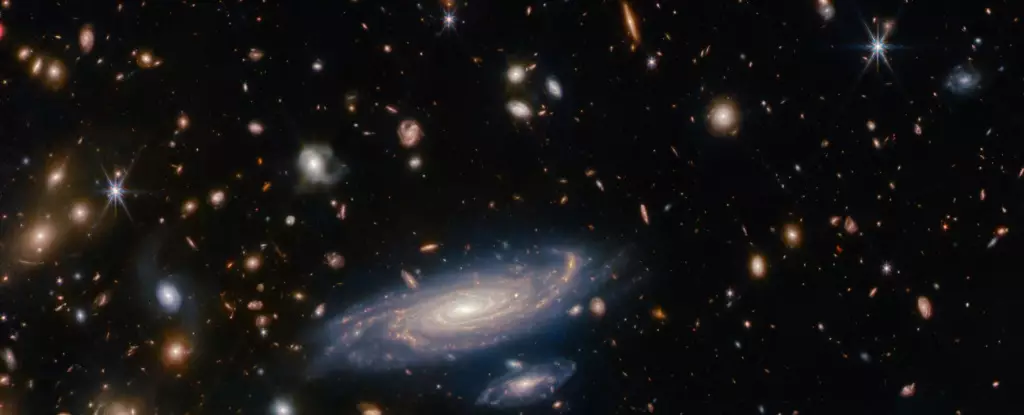The James Webb Space Telescope (JWST) has set its sights on unraveling the mysteries of the early universe. Among its principal science goals is to observe the epoch during which the first galaxies were formed, shedding light on their formation, evolution, and composition. With each deep dive into the cosmic past, the telescope continues to astonish, breaking its own record for the most distant galaxy ever observed. Recent studies published in Nature Astronomy by a team of Danish researchers claim to have caught a glimpse of some of the earliest galaxies with JWST, capturing a snapshot of their ongoing formation.
A Different Perspective on Galactic Evolution
Traditionally, the ratio between galaxies and their heavy elements has been thought to remain constant throughout the local universe’s 12-billion-year history. However, analysis conducted using JWST is challenging this long-standing belief. Astronomers have now observed that the youngest galaxies exhibit a distinct characteristic that sets them apart from their older counterparts—they lack the expected ratio of stars to heavier elements. This variance arises from their ongoing formation processes, as they have not yet experienced the cycles of star birth and death that enrich gas clouds with metals, the collective term for elements heavier than hydrogen and helium.
Looking closely at 16 galaxies, some of which are among the earliest ever observed, the astronomers have made significant discoveries about their chemical composition. The team found that the chemical abundances in these galaxies are merely one-fourth compared to those observed in galaxies formed at later stages. In their published paper, the astronomers postulated that “these findings suggest that galaxies at this time are still intimately connected with the intergalactic medium and subject to continuous infall of pristine gas, which effectively dilutes their metal abundances.” These observations serve as a crucial glimpse into the earliest phases of galaxy formation.
The researchers behind the study are quick to highlight that their findings challenge the conventional model of galactic evolution, which posits an equilibrium among the number of stars formed and the amount of heavy elements produced throughout the history of the universe. However, these dissimilarities with the prevalent model do not come as a surprise. Theoretical models of galaxy formation have long predicted such deviations, and now, through the lens of JWST, they have been observed and confirmed.
Kasper Elm Heintz, leader of the study and assistant professor at the Cosmic Dawn Center at the Niels Bohr Institute and DTU Space in Copenhagen, Denmark, expressed his thoughts on the discovery, stating, “The result gives us the first insight into the earliest stages of galaxy formation which appear to be more intimately connected with the gas in between the galaxies than we thought.” He further emphasized that the study represents just the beginning of JWST’s observations in this area, with the promise of more comprehensive and enlightening data yet to come.
A Gateway to Expanded Knowledge
The researchers anticipate that JWST will continue to provide invaluable data, significantly augmenting our understanding of how galaxies and other cosmic structures began taking shape within the first billion years following the Big Bang. With high expectations for future observations and studies, the team remains confident that the cutting-edge capabilities of the James Webb Space Telescope will unlock the secrets of the universe, allowing humanity to peer deeper into our cosmic origins than ever before.



Leave a Reply